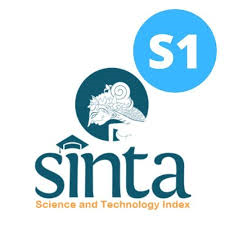EVALUATING THE ECOPHYSIOLOGY OF SURVIVAL FOR MAPANIA CUSPIDATA (MIQ.) UITTIEN (CYPERACEAE) TRANSPLANTATION
Abstract
SHABDIN, Z., NORI, H., MEEKIONG, K. & FAIZ, M. F. M. 2021. Evaluating the ecophysiology of survival for Mapania cuspidata (Miq.) Uittien (Cyperaceae) transplantation. Reinwardtia 20(2): 69–75. — This study aimed to investigate the ecology of the sedge Mapania cuspidata at three different locations in East Malaysia, namely Gunung Gading, Matang and Bengoh, and the survival of M. cuspidata transplanted in pots exposed to different light intensities in Universiti Malaysia Sarawak, East Malaysia. The highest species density was recorded in Matang with a total density of 1.98 individuals/ha followed by Bengoh (1.42) and Gunung Gading (0.96). In these locations, the soil pH ranged from 4.9 in Bengoh to 5.7 in Matang where as soil organic matter content was between 3.47% in Bengoh and 8.68% in Gunung Gading. The highest light intensity was recorded in Matang with 0.94 kLux, and produced plants with the highest chorophyll content (64.8 SPAD value). This study found that the transplanted M. cuspidata had 90% survival over a four month experiment, produced ~ 8 new leaves, took an average of 15.8 days to produce a new leaf and had a chlorophyll content of ~30.3 SPAD value regardless of the intensity of light where the plants were exposed to. The findings of this study suggests that M. cuspidata can grow well in any light conditions and therefore it is also possible to transplant and re-establish other Mapania species in new location. It is hoped that the initiative to relocate
other Mapania species of concervation concern will be effective if adequate post-harvest handling methods are practiced.
Keywords
Full Text:
PDFReferences
APOSTOL, K.G., JACOBS, D.F. &DUMROESE, R.K. 2009. Root desiccation and drought stress response of bareroot Quercus rubra seedlings treated with a hydrophilic polymer root dip. Plant Soil 315:229–240.
BALL, D. F. 1964. Loss-on-ignition as an estimate of organic matter and organic carbon in non-calcareous soils. Journal of Soil Science. 15: 84–92.
ENGELBRECHT, B., COMITA, L., CONDIT, R., KURSAR, T.A., TYREE, M.T., TURNER, B.L. & HUBBELL, S.P. 2007. Drought sensitivity shapes species distribution patterns in tropical forests. Nature. 447: 80–82. https://doi.org/10.1038/nature05747.
GOVAERTS, R., SIMPSON, D. A., BRUHL, J. J., EGOROVA, T., GOETGHEBEUR, P. & WILSON, K. L. 2007.World Checklist of Cyperaceae. Sedges. Kew Publishing.
GOYETTE, B., PICHE, M.,BROWNBRIDGE, M. &McGRATH, D. 2014. Impact of handling practices on the quality of bare-root plants: A review. Journal of Environment Horticulture. 32(2):103-113.
JACKSON, D.P., ENEBAK, S.A. &SOUTH, D.B. 2012. Survival of southern pine seedlings after inoculations with Pythium and cold storage in the presence of peat moss. Forest Pathology. 42:44–51.
LIU, H., REN, H., LIU, Q., WEN, X., MAUNDER, M. & GAO, J. 2015. Translocation of threatened plants as a conservation measure in China. Conservation Biology 29(6): 1537–1551.
DOI: 10.1111/cobi.12585.
MEEKIONG, K., SHABDIN, Z., IPOR, I. B. & AMPENG, A. 2011. Notes on the genus Mapania (Cyperaceae) from Lanjak Entimau. In: MOHAMED, H., IPOR, I. B., MEEKIONG, K., SAPUAN, A. & AMPENG, A. (Eds.). Lanjak Entimau Wildlife Sanctuary, ‘Hidden Jewel of Sarawak’, Academy of Science Malaysia and Sarawak Forest Department. Pp. 105–110.
MIRAADILA, M. I., SHABDIN, Z. & MEEKIONG, K. 2015. Preliminary report on the distribution of genus Mapania (Cyperaceae) in Sarawak. International Conference on Biodiversity
and Conservation, 26-28 May 2015, Sultan Idris Education University. Pp. 264–272.
MIRAADILA, M. I., SHABDIN, Z. & MEEKIONG, K. 2016a. Two new species and one new geographical record for Sarawak, Malaysia (Cyperaceae; Mapanioideae). Reinwardtia 15(2): 129–135.
MIRAADILA, M. I. & SHABDIN, Z. 2016b. Mapania meekiongii, a new species of Mapania (Cyperaceae) from Sarawak, Malaysia. Folia Malaysiana 17(1): 61–66.
MIRAADILA, M. I. 2018. Systematic Study of Genus Mapania Aublet (Cyperaceae) in Sarawak. Universiti Malaysia Sarawak, Malaysia. [MSc.Thesis].
MUASYA, A. M., SIMPSON, D. A., VERBOOM, G. A., GOETGHEBEUR, P., NACZI, R. F. C., CHASE, M. W. & SMETS, E. 2009. Phylogeny of Cyperaceae based on DNA sequence data: Current Progress and Future Prospects. Botanical Review 75: 2–21.
NACZI, R. F. C. & FORD, B. A. 2008. Sedges: Uses, Diversity and Systematics of the Cyperaceae. Missouri Botanical Garden Press, U.S.A.
NEGBI, M. 1992. A sweetmeat plant, a perfume plant and their weedy relatives: A chapter in the history of Cyperus esculentus L. and Cyperus rotundus L. Economic Botany 46: 64–71.
SHABDIN, Z., CULHAM, A., SIMPSON, D. A & MEEKIONG, K. 2013a. Mapania sapuaniana (Cyperaceae), a new sedge species from Sarawak. Blumea 58: 45–48.
SHABDIN, Z., CULHAM, A., SIMPSON, D. A. & MEEKIONG, K. 2013b. Mapania multiflora, a distinctive new species of Cyperaceae
(Mapanioideae) from Borneo. Kew Bulletin 68: 673–678.
SHABDIN, Z., MEEKIONG, K. & MIRAADILA, M. I. 2016. A new Mapania species (Cyperaceae) from Sarawak, Malaysia. Borneo Journal of Resource Science and Technology 6(1): 19–24.
SIMPSON, D. A. 1992. A Revision of the Genus Mapania. Surrey, Royal Botanic Gardens, Kew.
SIMPSON, D. A. & INGLIS, C. A. 2001. Cyperaceae of economic, ethnobotanical and horticultural importance: a checklist. Kew Bulletin 56: 257–360.
SIMPSON, D. A., FURNESS, C. A., HODKINSON, T. R., MUASYA, A. M. & CHASE, M. W. 2003. Phylogenetic relationships in Cyperaceae subfamily Mapanioideae inferred from pollen and plastid DNA sequence data. American Journal of Botany 90(7): 1071–1086.
SIMPSON, D. A., YESSON, C., CULHAM, A., COUCH, C. A. & MUASYA, A. M. 2011. Climate Change and Cyperaceae. In: HODKINSON, T. R., JONES, M. B., WALDREN, S. &
PARNELL, J. A. N. (Eds.) Climate Change, Ecology and Systematics. Cambridge University Press.

This work is licensed under a Creative Commons Attribution-NonCommercial-ShareAlike 4.0 International License.
Refbacks
- There are currently no refbacks.









